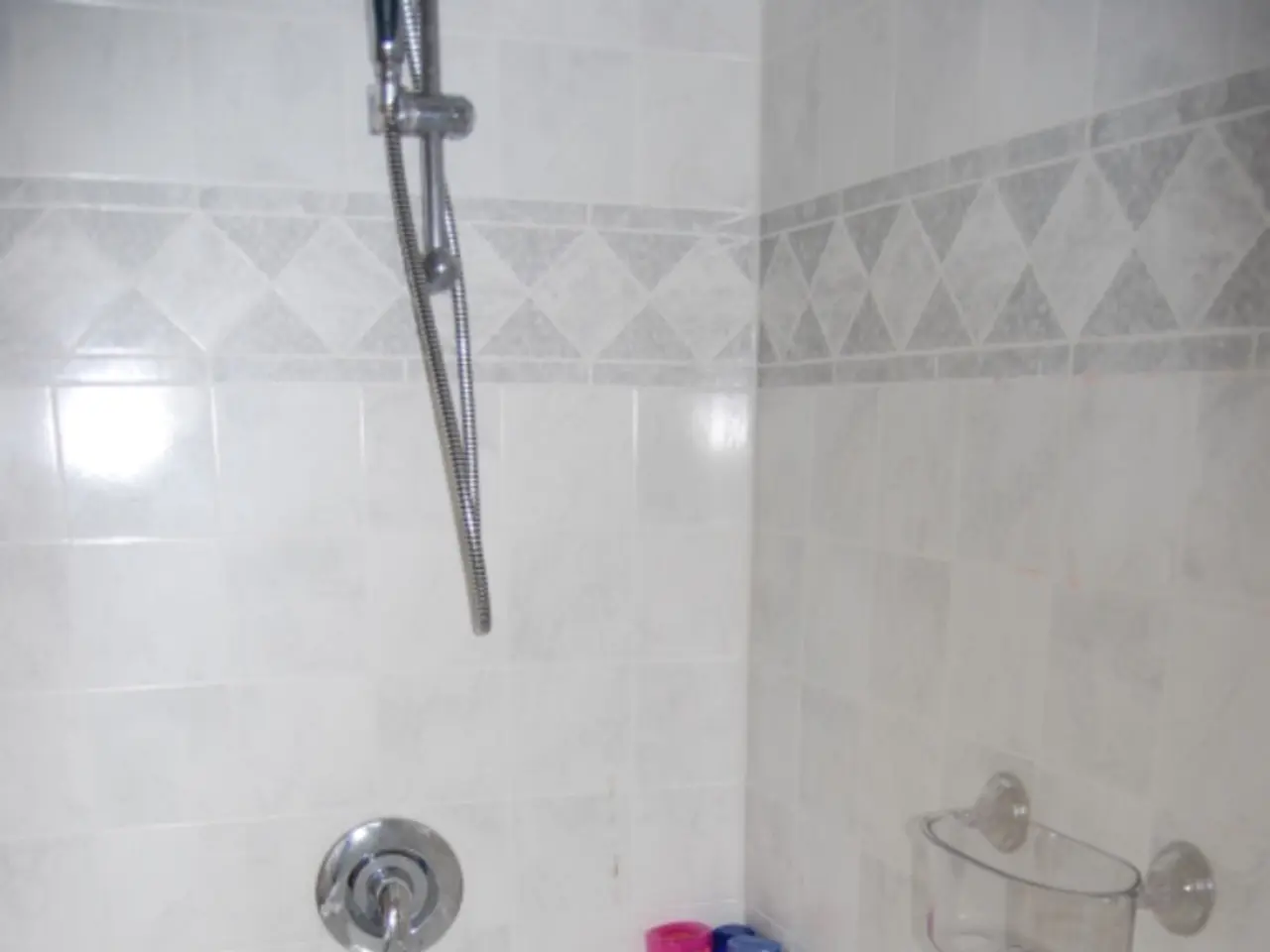Uncovering the Distinctive Features of Bathroom Floor and Wall Tiles: Crucial Insights Before Your Renovation Project
Bathroom Wall Tiles vs. Floor Tiles: A Guide to Durability, Slip Resistance, and Maintenance
When it comes to decorating your bathroom, choosing the right tiles for your walls and floors is crucial. Here's a breakdown of the key differences between bathroom wall tiles and floor tiles in terms of durability, slip resistance, and maintenance.
Durability
Bathroom wall tiles, often made of ceramic, are softer and less dense, designed for vertical use with less wear. On the other hand, floor tiles, typically made of porcelain, are harder and denser, built to withstand foot traffic, weight, and potential wear. Porcelain tiles are denser due to higher firing temperatures, making them suitable for heavy use and moisture.
Slip Resistance
Floor tiles require good slip resistance to prevent accidents in wet bathroom conditions. They frequently have specialized anti-slip ratings such as R10 or R11, indicating high slip resistance even when wet, which is critical for safety on wet surfaces. Wall tiles do not generally need slip resistance as they are vertical surfaces.
Maintenance
Floor tiles must withstand frequent cleaning, spills, and moisture exposure. Porcelain floor tiles are low-maintenance, stain-resistant, and durable under daily use. Proper grout sealing is important to prevent water infiltration and staining on floors. Wall tiles tend to be easier to maintain because they are less exposed to mechanical wear, making ceramic a common choice due to affordability and ease of installation.
Choosing the Right Tiles
It's vital to check the specification of your bathroom tiles thoroughly before buying, as some tiles can be used across both surfaces, but not all will be suitable for these two types of application. If a tile is suitable for both applications, it will usually say so clearly in the manufacturer's specification.
For the bathroom floor, it's vital to select a dense, robust tile that can withstand regular footfall and is water resistant. Porcelain tiles tend to be the safest bet for bathroom floor tiles, as they are tough, low-maintenance, and usually more affordable than natural stone or handmade options.
Exploring Design Options
Bold colors, geometric patterns, and contrasting textures can help define the aesthetic of the bathroom space. Encaustic tiles, for example, can be used across both floors and walls, and their matte, tactile surface finish is appreciated by Leo Wood from Kinder Design.
Lee Thornley from Bert and May suggests using patterned tiles to create a bold look or a mural-like effect on bathroom walls. Natural, sky blue, and nude colors are noted as options for bathroom wall tiles. Leo Wood suggests leaning into a bolder choice for smaller bathrooms, as they can afford to be more expressive.
The Final Word
When choosing tiles, it's important to take into account the manufacturer's guidelines regarding the slip rating, water resistance, and weight. Examining tiles in a showroom or ordering samples is recommended when unsure about their suitability.
María D. Arraez, the UK representative for Tile of Spain, emphasizes the importance of checking the weight of large-format wall tiles before affixing them to the walls. Claire Garner, the founder and director of Claire Garner Interior Design Studio, states that the key difference between wall and floor tiles lies in their durability and slip resistance.
By understanding these differences, you can make informed decisions when selecting tiles for your bathroom, ensuring a durable, safe, and aesthetically pleasing space.
- Encaustic tiles, appreciated for their bold colors, geometric patterns, and contrasting textures, can be used on both bathroom floors and walls, providing an aesthetic touch to the space.
- For small bathrooms, Leo Wood suggests opting for bolder colors, as they can afford to be more expressive and help define the space effectively.
- Natural, sky blue, and nude colors are deemed suitable options for bathroom wall tiles, offering a subtle yet stylish look.
- Porcelain tiles are often a safe choice for bathroom floor tiles due to their robust nature, water resistance, low maintenance, and affordability compared to natural stone or handmade options.
- When making tile selections for your home-and-garden project, like designing a bathroom, consider factors such as the manufacturer's guidelines on slip ratings, water resistance, and weight, and examine tiles in showrooms or order samples to ensure they meet your requirements and fit your lifestyle in terms of durability, maintenance, and aesthetics in your interior design.





